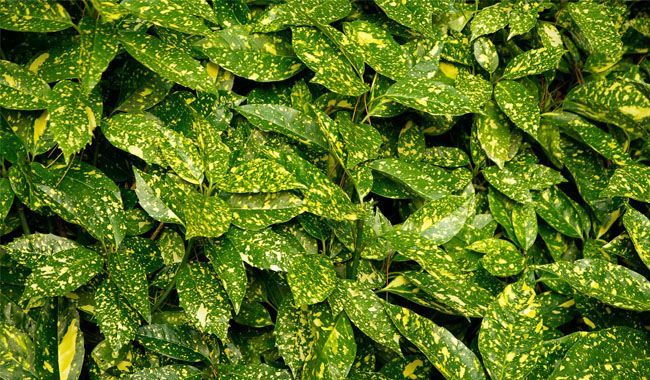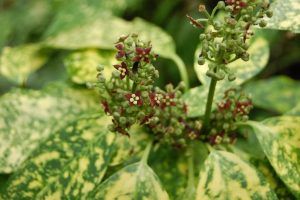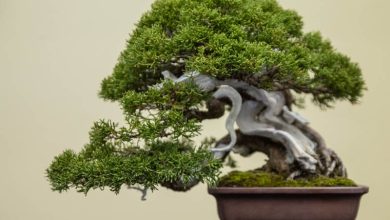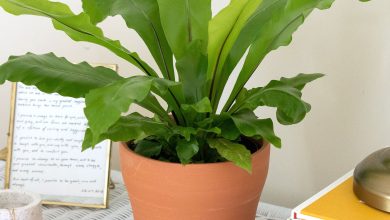Aucuba Japonica: [Cultivation, Care, Substrate, Irrigation, Pests and Diseases]

 The aucuba japonica or speckled laurel is a small shrub thatreaches a maximum height of 5 meters and has decorative foliage.
The aucuba japonica or speckled laurel is a small shrub thatreaches a maximum height of 5 meters and has decorative foliage.
It has the property of producing flowers that can be found in red or purple depending on the chosen species, plus its fruits are contrasting red and inedible.
Its dark green, speckled leaves give it an elegant and sophisticated appearance that we can have directly in the garden or in a pot throughout the year.
Do you dare to enjoy the benefits of this plant?
Learn everything you need to know to plant aucuba japonica in your garden.
Important points when planting Aucuba Japonica
- When? In late spring and early summer.
- Where? In semi shade.
- How do we prepare the land? With earth, humus and peat.
- How should we water? By drip and sprinkler.
- How often do you have to water? In summer constantly, in winter suspend if necessary.
- What pests and diseases does it have? Be careful with aphids and root rot caused by waterlogging.
Characteristics of the aucuba japonica
 The Japanese aucuba (Aucuba japonica) is an evergreen shrub that grows 2 to 3 meters tall with colourful, green and golden-yellow leaves up to 20 cm long.
The Japanese aucuba (Aucuba japonica) is an evergreen shrub that grows 2 to 3 meters tall with colourful, green and golden-yellow leaves up to 20 cm long.
The flowers are not particularly ornamental, but attractive bright red berries replace them in the fall if a male plant grows nearby. Flowers and fruit are often hidden behind foliage.
The Aucuba are also used as indoor plants.
Aucuba japonica was introduced to England in 1783 by Philip Miller’s student John Graeffer, initially as a plant for a heated greenhouse. It was widely cultivated as the » golden plant » by 19th century gardeners.
When to sow aucuba japonica?
 The sowing of the aucuba japonica will be carried out during the spring-summer transition through cuttings.
The sowing of the aucuba japonica will be carried out during the spring-summer transition through cuttings.
In areas where temperatures are warm and constant throughout the year, it can be sown at any time.
Where to plant aucuba japonica?
- Although it shows a preference for warm climates, this does not mean that it is capable of withstanding direct sun.
- For this reason, it is best kept in partial shade .
- Part of the most beneficial properties of the aucuba japonica planting is that it can thrive without complications in highly polluted environments .
- This means that it becomes an ideal species for the most crowded cities.
- It can even withstand the salt-laden environment that prevails in coastal areas.
How to prepare the land?
Aucuba japonica is not very demanding in this aspect, but if we want it to be as healthy as possible, it is best to offer it a soil rich in nutrients.
The ideal is to prepare the soil with a soil mixture that contains a good amount of humus and some peat.
It is able to adapt to all types of soil. If it comes to choosing, the slightly acidic ones will be your favorite environment.
How do we water the Japanese aucuba?
- The irrigation of the aucuba will be carried out by direct dripping on the root and sometimes aspersion on the leaves to give them relative humidity.
- It is important to know that it is a species capable of surviving for a good period of time without risks, especially in the cold season.
How often do we water the Japanese aucuba?
 Irrigation will vary depending on the time of year, becoming more frequent in summer and being reduced (almost entirely) in winter.
Irrigation will vary depending on the time of year, becoming more frequent in summer and being reduced (almost entirely) in winter.
It is very important to know that the Japanese aucuba is absolutely intolerant to waterlogging.
If you have it in a pot, it is important to control the level of water that is applied in the irrigation and ensure that the soil is well drained.
In the event that it is in the garden, it must be offered adequate protection during rainy days.
How to plant aucuba japonica step by step?
The sowing of the aucuba japonica will be carried out during the warmest periods of the year to ensure that it prospers and is given through cuttings.
The steps to follow are:
- Select cuttings with a semi-woody texture, preferably two or three, to ensure the success of the process. The approximate size should be 15 centimeters and they should be cut flush with a knot with a sharp object to prevent the tissues from breaking.
- Prepare an appropriate pot with a mixture of peat and sand and bury them carefully there, up to an approximate depth of 10 cm. Before burying it is necessary to remove the leaves that are located in the part that will remain underground.
- Moisten the soil around the cuttings, without flooding. This process will be repeated as it is seen that the earth dries.
- Cover the cuttings with a plastic bag to maintain the humidity of the environment and remove it for a few minutes each day to ventilate.
- Place in a cool space where it is at room temperature and that it remains constant.
When the aucuba is planted in pots, it is recommended to perform a transplant every 3 years.
What care does aucuba japonica need?
- To achieve flowering effects and allow the plant to appear healthier, it is best to fertilize with mineral fertilizers.
- These can be obtained in a soluble version that allows them to be incorporated into the irrigation frequency, depending on the planning of the subject.
- Specialists recommend that it be during the summer period at the rate of a monthly fertilization.
- In the other seasons, this process will not be necessary and, rather, could become counterproductive.
- Pruning is not essential because its growth is rather even.
- In case you want to apply anyway, it is advisable to concentrate only on the areas where dry leaves or branches are noticeable.
- It is also possible to work with segmented pruning to organize its growth structure.
What pests and diseases affect the aucuba japonica?
Being so resistant to issues such as pollution or drought, it is not surprising that its propensity to suffer from pests or diseases is quite low.
However, in areas where aphid attacks are common during the summer, it is best to make sure that you will be free of them.
For this, there are many natural remedies that will not cause any negative effect on its structure and will keep it protected.
For example, extracts of nettle or garlic represent an excellent ally.
As for diseases, it is possible that it presents rotting if it is subjected to excessive waterlogging.
One way to avoid this is to ensure that planting is done away from areas that can cause stagnation, such as garden fences.
More interesting facts about the aucuba japonica reflect that it is able to withstand not so strong frosts, maintaining its foliage.
In addition, it is necessary to know that it is a dioecious plant. This means that it needs a male and a female species to flourish and produce fruit.
For all this, it becomes an infallible alternative when it comes to planting ornamental plants.



